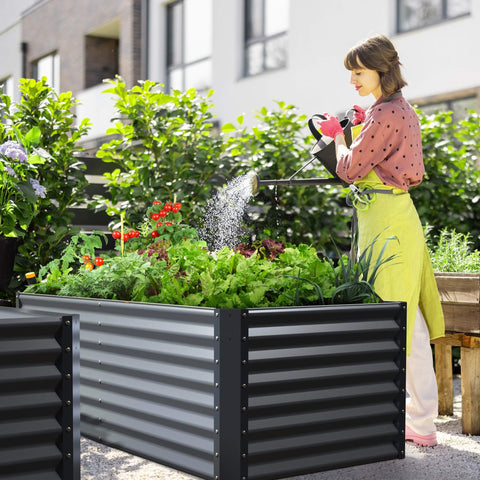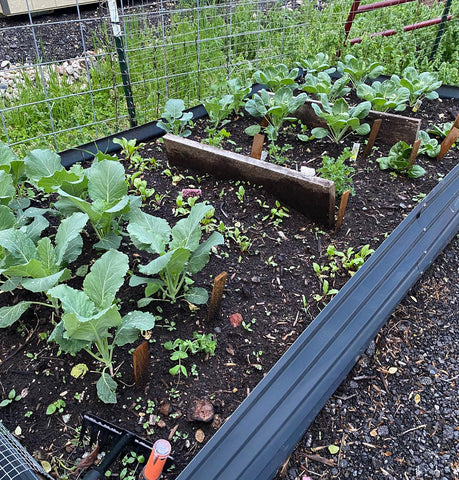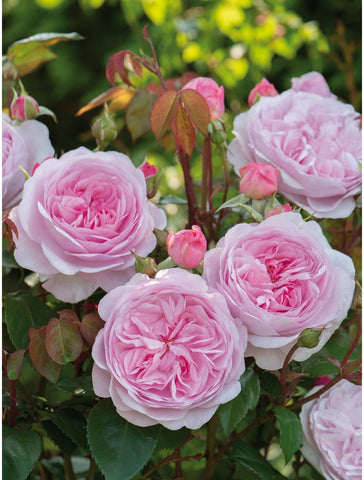Advice on when to water the plants in your garden varies, and it can be difficult to know what guidance to follow. But there is a right way to water your vegetable garden. When a vegetable garden doesn't get enough water, even for a few days, your plants can be seriously negatively affected. Read on for everything you need to know about when and how often to water your garden. The following content also has some reference value for raised garden beds.
You may have heard that early morning is the best time to water your garden, and this advice is usually true. It's best to avoid watering during the hottest part of the day, so it makes sense to water in the morning. Another good idea is to check the weather forecast to see if there is any rain in the forecast. If so, you can usually put off watering your garden.
But as with anything, there are exceptions to the rule. Waiting for rain or morning is not a good idea for thirsty, wilted plants. Water your plants whenever they need it.

How do I know when I need to plant? Check the state of your plants and the moisture levels in the soil. If plants are wilting or showing heat stress, give them a drink of water immediately, even on a hot afternoon and even when rain is expected. If your plants are not wilted, you can check the moisture level in the soil to determine if it's time to water. Dig 2 inches (5 cm) into the ground.
If it feels dry, water the plant. Ideally, the best time to water your garden is in the morning, when the weather is still cool. This allows water to flow into the soil and reach the roots of the plants without evaporating the excess water. When the sun comes out, temperatures rise, evaporation increases, and plants lose water faster.
Morning watering
Ideally, the best time to water your garden is in the morning, when the weather is still cool. This allows water to flow into the soil and reach the roots of the plants without evaporating the excess water. When the sun comes out, temperatures rise, evaporation increases, and plants lose water faster.
Early morning irrigation also allows plants to grow normally for the rest of the day. If they have a drink in the morning, they are better able to cope with the heat of the sun in the afternoon.
Another benefit of morning irrigation is that there is less wind, which can cause water loss. The wind usually starts in the afternoon, blowing water from the plants onto the yard or sidewalk.
Water in the afternoon or evening
There is a common gardening myth about afternoon watering. It is said that water droplets on the leaves act like mini magnifying glasses, focusing sunlight and burning the leaves. It's not true. First, most areas don't have sunlight strong enough for water to scorch leaves. Second, even if you live in a place with strong sunlight, water droplets will evaporate in extreme heat before they can focus the sunlight and burn the leaves.
Sometimes life clashes with our ideal watering schedule and we don't enter the garden until we get to work or start the day (although a watering timer is a great option for gardeners who want to sleep in). So, when is the second best time to water outdoor plants?

Late afternoon or early evening are acceptable options. By late afternoon, the heat of the day had passed, but there was still enough sunlight to dry the leaves before nightfall. If the plant's leaves are wet at night, it can foster fungal problems, such as powdery mildew and smoke mold, which can be harmful to vegetables.
Watering in the late afternoon or early evening reduces the loss of water to evaporation and gives plants a few hours with less sunlight to absorb water into roots, stems and leaves. The type of irrigation system you use can also determine what time of day you water. If you use a drip irrigation system or soak hose, you can keep watering until early evening. More on this below.
How often should you water your garden
While you can find gardening articles that detail strict watering schedules - watering every other day, for example - the truth about how long you need to water your plants is a bit more complicated. The type of soil in your garden, the weather, and the age of your plants can all affect how often you water.
For example, if you have sandy soil, water can easily pass through. But clay holds water, and too much water can overwhelm plants. When it comes to weather, if you live in a warm climate with hot summers, water evaporates quickly, so frequent watering is necessary. In addition, some areas receive more rainfall than others. Plant age is another determining factor, as new plants require more frequent watering to establish a healthy and strong root system, unlike established plants.
How much water do vegetables need?
The rule of thumb is that vegetable plants need 1 inch (2.5 cm) of rain or irrigation per week. An inch sounds small, but it's actually a lot of water. If your garden is 10 by 10 square feet (30.5 square meters), you'll need 62 gallons (235 liters) per week. If a garden is 20 feet (6 meters) by 30 feet (9 meters), it needs 372 gallons (1,408 liters) of water per week.
When you water, soak the roots of the plant. But how deep these roots grow depends on the type of vegetable. The roots of most vegetables can reach 6 to 12 inches (15 to 30 cm) deep in the soil. However, some long-season plants, such as tomatoes, corn, squash, asparagus, raspberries, and rhubarb, have roots that are twice as long. Give each plant enough water to moisten the soil deep into the roots.

Garden irrigation method
There are many different ways to water plants, and you can experiment to see which one you like. Any of them can work well as long as they are watered enough. Four common garden irrigation methods include:
- Drip irrigation systems are the most efficient way to deliver water to plants. These systems provide water to each plant through pipes and transmitters. They work especially well on sandy soils and slopes.
- Watering with a hose is one of the most common forms of irrigation. It is effective for seed starts and containers, but watering evenly in mature plantings can be tricky.
- Trench irrigation involves digging shallow trenches in flat land. It is not suitable for sandy soil, nor for row planting. If your soil is sandy or the garden has a high slope, then the water will not flow along that line.
- Immersion hose is simple and effective. They allow water to seep through the entire length of the hose and irrigate each plant.









